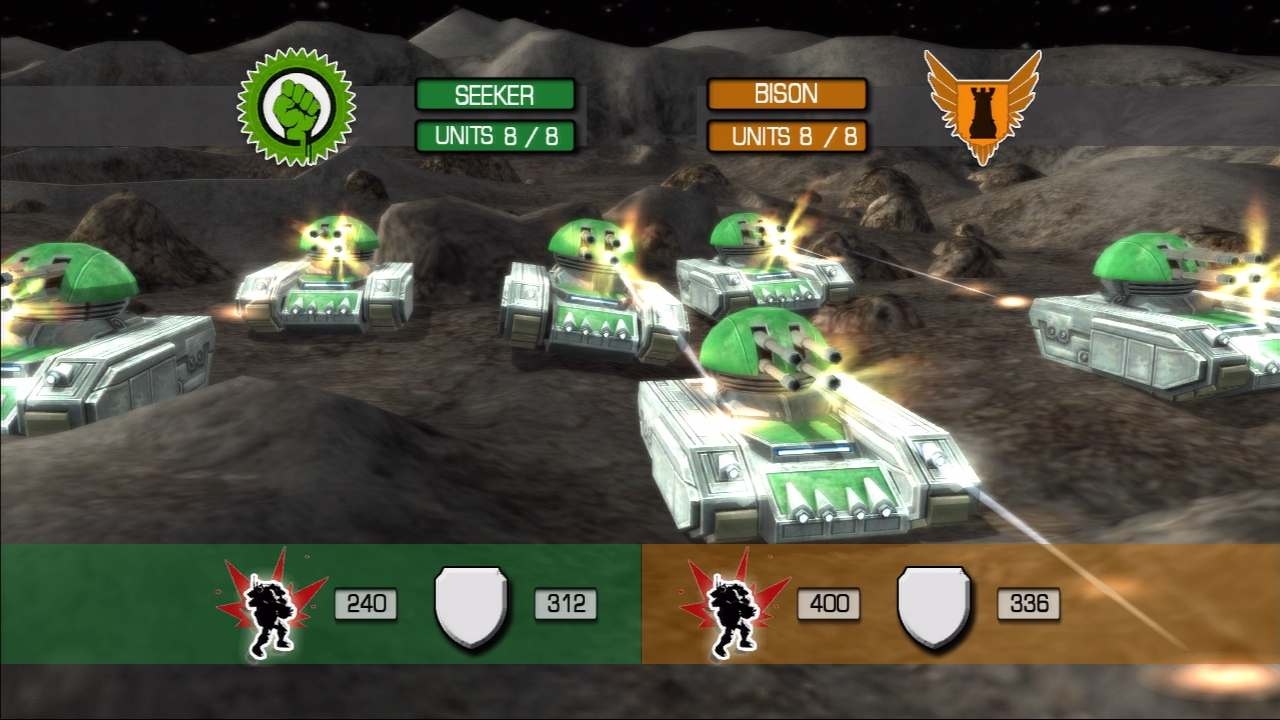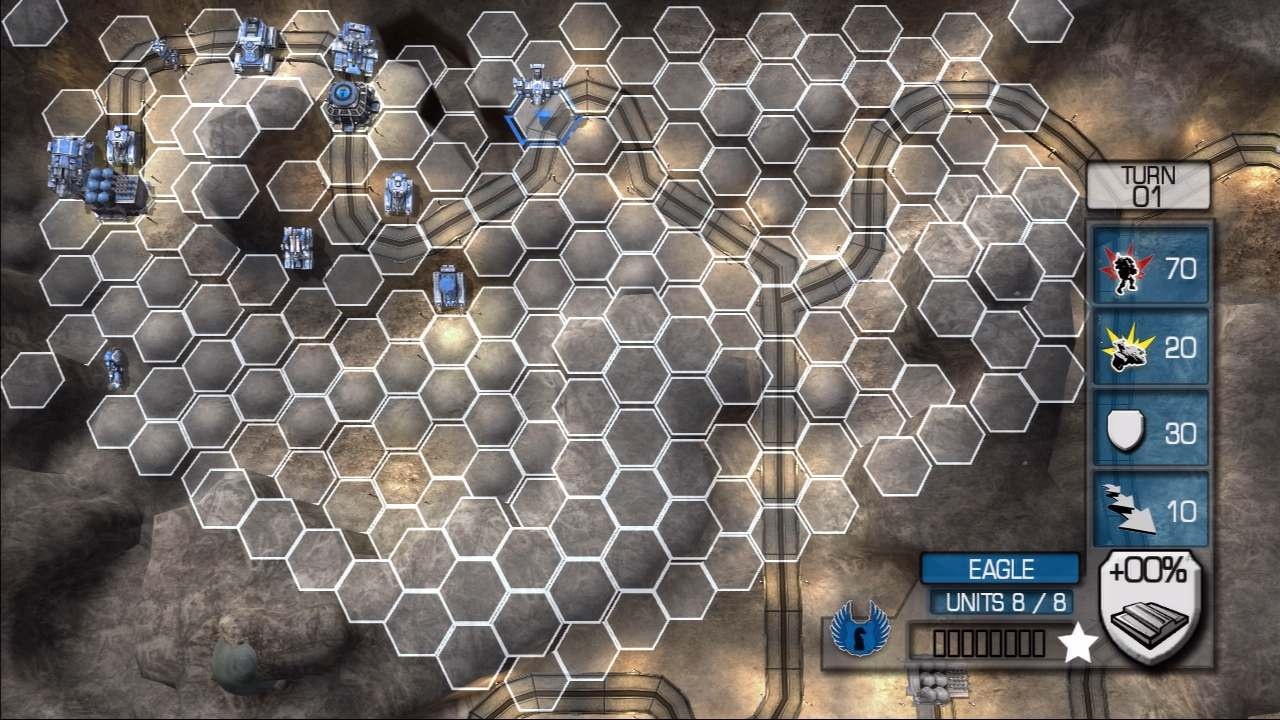Old games never die; they just wind up ported to Xbox Live Arcade. The two-decade-old TurboGrafx-16 game Military Madness: Nectaris is the latest oldie-but-goodie to be resurrected in the Xbox 360's online marketplace, although the turn-based strategy game's time has clearly passed. The main appeal of the game is that this genre is underrepresented on the Xbox 360, with most games of this sort now coming out on either the PSP or DS. Still, only retro gamers are likely to appreciate such a dated, superficial design.

Even if you've never played the original Nectaris games (the franchise was given new life on the PlayStation in 1999 and then released for the Wii in 2006), the scene here should be familiar. The time is the late 22nd century and the setting is the Moon. On it, a civil war has erupted between the Earth's Union forces and a breakaway former prison colony now dubbing itself the Xenos. Your goal in the standard and advanced campaigns is to end this pesky little conflict, courtesy of fighting through more than a dozen turn-based missions. Mechanics and structure are very old-fashioned. You have a base guarded by colorful if blocky and archaic-looking tanks, infantry, aircraft, artillery, and mechs. The other guy also has a base, guarded by the exact same forces in a different color. So the goal is, of course, to duke it out to the expected martial music and generic game ka-booms, with the lone victory conditions being either the destruction of all enemy units or domination of the rival base. Most missions also have factories that can be conquered by infantry, giving you access to a limited number of reinforcements. You can play solo or in multiplayer matches that function the same as the single-player missions with the addition of turn limits, point-based victory conditions, and commander units that can be somewhat customized. And that's pretty much it.
Tactical considerations here are minimal. Both sides feature the exact same units, which means you don't have to spend any time figuring out a rock-paper-scissors formula for launching offensives and defending against the enemy. Terrain is a little more involved. You have to take account for the moon's rocky surface in every battle. Hills and craters provide positives and negatives to battle calculations, as well as slow down unit movement. Gaining the high ground is key before committing to a fight. Planning an end goal before you start pushing tanks and troops around lunar battlefields is also vital. If you fail to think a couple of steps ahead, you can easily wind up being ambushed by foes from atop cliffs or cause an armor column to be struck trudging slowly forward amidst a bunch of craters. The other strategic consideration comes from maneuvering units into smart positions before attacking. You gain big bonuses in battle by surrounding enemies before the guns start going off. This adds a realistic military dimension to combat, albeit at the expense of game flow because you often have to slow down tank rushes and spend many turns positioning units to gain the best results when attacking or defending. Every battle result is important, too. Unit numbers are generally quite limited on each campaign map, so you can't afford to lose even a couple of tanks through a movement mistake.
Such a limited strategic scope makes Military Madness awfully shallow. With that said, missions in the campaigns can be quite challenging, with difficulty nicely gearing up over time. You go from basic base assaults with a handful of tanks and infantry in the beginning to full-fledged battles with tanks, troops, artillery, aircraft, and mechs by about the sixth scenario. The artificial intelligence is solid, too. Enemies hone in on unguarded bases and factories, as well as quickly recognize when they're in danger on the home front. Your rival always targets infantry first and foremost, which is smart because these are the only units that can end missions immediately by occupying bases or do major damage by taking over a factory.

But missions are gimmicky. Every map seems to have a trick to it that requires a fair bit of experimentation before you have a chance at emerging victorious. The enemy typically throws some new angle at you, like extra factories or an exclusive type of artillery or aerial vehicle. Then you have to figure out how to neutralize it while also plotting the best movement strategies to avoid craters and the possibility of being attacked from cliffs. Unfortunately, you have so few forces that you never get the chance to rebound from screwups during missions and wind up having to reload a save or start from scratch. The lack of an in-game tutorial makes things extra annoying, too. Unless you scour the docs in the help section in the main menu, you often have to learn about unit abilities by watching how the enemy utilizes them. Too many missions end prematurely with you muttering something like "I didn't know I could do that." This gets more than a little tedious by the time you reach the midway point of the standard campaign because the ramped-up difficulty sees you thrown back to square one quite a few times before you finally get what you're supposed to be doing.
You can't go home again. Military Madness: Nectaris is an interesting play solely for archaeologists interested in the origins of turn-based strategy gaming on consoles. Just about everyone else will wish they'd spent their 800 points on something a little more contemporary.